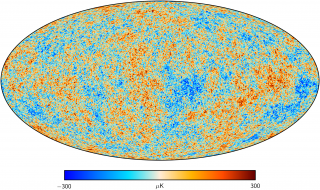Bibcode
Sueno, Y.; Baselmans, J. J. A.; Coppens, A. H. M.; Génova-Santos, R. T.; Hattori, M.; Honda, S.; Karatsu, K.; Kutsuma, H.; Lee, K.; Nagasaki, T.; Oguri, S.; Otani, C.; Peel, M.; Suzuki, J.; Tajima, O.; Tanaka, T.; Tsujii, M.; Thoen, D. J.; Won, E.
Referencia bibliográfica
Progress of Theoretical and Experimental Physics
Fecha de publicación:
2
2024
Número de citas
0
Número de citas referidas
0
Descripción
Understanding telescope pointing (i.e. line of sight) is important for observing the cosmic microwave background (CMB) and astronomical objects. The Moon is a candidate astronomical source for pointing calibration. Although the visible size of the Moon (30') is larger than that of the planets, we can frequently observe the Moon once a month with a high signal-to-noise ratio. We developed a method for performing pointing calibration using observational data from the Moon. We considered the tilts of the telescope axes as well as the encoder and collimation offsets for pointing calibration. In addition, we evaluated the effects of the nonuniformity of the brightness temperature of the Moon, which is a dominant systematic error. As a result, we successfully achieved a pointing accuracy of 3.3'. This is one order of magnitude smaller than an angular resolution of 36'. This level of accuracy competes with past achievements in other ground-based CMB experiments using observational data from the planets.
Proyectos relacionados

Anisotropía del Fondo Cósmico de Microondas
El objetivo general de este proyecto es determinar y estudiar las variaciones espaciales y espectrales en la temperatura del Fondo Cósmico de Microondas y en su Polarización en un amplio rango de escalas angulares que van desde pocos minutos de arco hasta varios grados. Las fluctuaciones primordiales en la densidad de materia, que dieron origen a
Rafael
Rebolo López